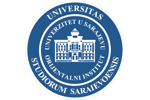A Contribution to the History of Plevlja in the Otoman Period- The Endowment of Husein-Pasha Boljanić
Abstract
The present paper deals with the park that Husein-Pasha Boljanić played in the development of the town of Plevlja. The town of Plevlja, or Taslija, as it was called· during Ottoman rule, developed from a mediaeval market town. In the course of. time, owing to its favourable geographic position, its location on the important Dubrovnik road, later better known as the Istanbul road, the town grew considerably in size. Its urban development occurred in the second half of the ·XVIth century, when it became a bigger settlement with the status of a kasaba. From 1576 onwards, it was the seat of the Herzegovinian Sanjakbey and this remained until as late as 1833, that is, for full 257 years. The town owed a great deal of what it became, and the role it played, to Husein-Pasha Boljanić an Ottoman dignitary originating from these parts. The urban, economic, and cultural development of Plevlja in the second part of the XVIth century is connected with his name. Owing to the high positions he had held, as governor of several Ottoman provinces, in the course of time he amassed a huge fortune and spent part of it building endowments in his native town. The most prominent of his endowments is the mosque in Plevlja, built in 1569/70, which in still well preserved. It is preserved as a part of the cultural heritage and still serves its original purpose. With its harmonious architecture and interior decorations, it is one of the more remarkable monuments of the Ottoman period in Yugoslavia. Its architecture and the harmony of its interior decoration, constitute an important part of the cultural heritage of the Ottoffialll period in Yugoslavia. Three basic elements are prominent in the design of the mosque. Those are primarily. the base of the main dome, and the two smaller ones over the mihrab wall, and the third element is an interesting system of dames built over the porch. A forty-meter high, stone minaret stands next to the mosque, one of the tallest built, like the mosque itself, in Yugoslavia at that time. The minaret is interesting because, it has been repaired and redecorated several times. It is built of porous stone, and if observed from the side, it seems to be rather unstable, which it actually is not. The well-known Turikish traveller Evli Celebi compared it with the Imperial Mosque.
Throughout the XVIth century, and especially in its second half, Plevlja developed in every respect with varying intensity reaching the zenith of its development in the Ottoman period a· century later. By its importance, and the role it played, it was one .of the more prominent towns of the Bosnian eyalet, and was known as such in other parts of the Ottoman Empire.



